
Student Switch Off
Welcome to Student Switch Off: The Energy Efficiency Podcast – episode 18, the podcast that brings you a mix of energy efficiency news, products and tips all year round. We’re interested in profiling people and products involved in promoting energy efficiency habits, products and information, so please do get in touch if you have something to contribute. This week: energy efficiency in student housing, the role of Ofgem, and the Champions of the Earth award.
Recycled pans
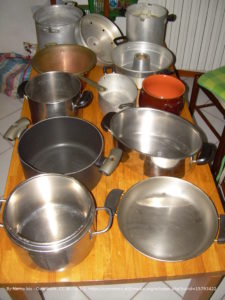
But before we get on with our advertised features, Business Green reported recently that Tefal has launched a recycling scheme together with Sainsbury’s, just in time for last week’s Recycle Week campaign that we looked at in the last episode. The idea is that customers return worn out pans, and in return get a 1/3 discount on Tefal’s So Recycled range. 300 Sainsbury’s stores will have collection points open until mid-October.
You won’t be surprised to hear that the scheme coincides with Tefal launching a new range of non-stick pans made wholly from recycled aluminium. According to Tefal, the combination of recycled materials and their energy efficient processes makes these pans 90% less emitting to produce. These pans’ non-stick coating is designed to last twice as long, so the cookware will have longevity, something that always makes a healthy contribution to the lifetime emissions value of an item. To complement the pans, Tefal has produced a range of utensils made with 95% recycled materials.
A quick look at pan recycling on council websites shows that in general they aren’t collected kerbside. Depending on what they’re made from they could go in the scrap metal hopper at the tip. Donating to the Tefal-Sainsbury’s scheme seems a good move even if you aren’t looking to buy a Tefal replacement. Looking in charity shops reveals a huge choice of cookware, most of which is in good condition and likely to last another good few years.
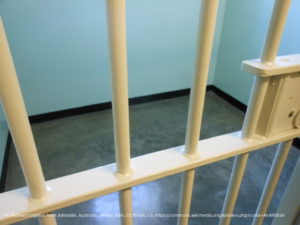
Tefal isn’t the only company incorporating recycled material into its pots and pans. Dutch company COMBEKK casts Dutch ovens in Holland – you don’t get much more authentic than that – using the traditional method of casting iron in sand moulds. It describes its products as 100% recycled. A stamp on the foot of each pan tells you what the main recycled material is in any given pan. It might be a train track or a prison bar. Incidentally, if you make your own sourdough bread, a Dutch oven is meant to be great for baking it in.
British company Crane, which describes itself as a ‘microbrand’, produces smart pots and pans with up to 30% recycled materials. Their products are 100% recyclable too.
Student Switch Off
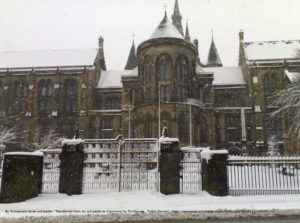
Our younger daughter’s just applied to university, so next year we’ll be waving off another child to start the higher education journey. Most students in the UK go away to university, in other words they don’t live at home while they’re studying. We have an extraordinary density of higher education settings in the UK and most kids can choose the setting that offers the course that best suits them, even if it means moving over 300 miles away, which is one option our daughter’s looking at.
Student accommodation and leisure facilities are an area ripe for energy efficiency improvements, something that hasn’t been lost on those providing it. These days providing student housing is almost a standalone business for some universities and colleges. Higher education settings combine a domestic element to a greater or lesser extent, and a business environment, presenting the full gamut of both problems and opportunity for improvement.
Variable
From our experience and that of friends’ kids, student accommodation varies hugely in facilities, comfort and good management. It’s an area we’ve seen poorly designed and badly delivered, but it doesn’t have to be that way. Students can feel very much at the end of a long chain when it comes to accommodation provision, and there are something you can’t easily change, like anti-social neighbours or being a 40 minute bus ride from lectures on a wet November morning. Students are taking some matters into their own hands.
Student Switch Off
SAVES2 stands for Students Achieving Valuable Energy Savings 2. It’s an international energy saving competition. Nearly 220,000 students will promote energy saving habits among their peers to help them keep down bills. There’s one strand for those in private rented housing, and one for those in university accommodation. Student energy saving campaigns have been run before, but what makes this one different is its scope. Local or short-term schemes have run before, but nothing engaging students across the whole academic year and between several countries and connecting them.
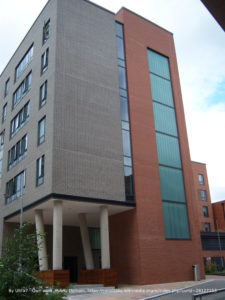
Student Switch Off runs in university accommodation. For those not familiar with how this works, many universities and colleges can’t provide in-house accommodation for all three (or sometimes four) years of a typical undergraduate degree in the UK. In this situation, in the second year and often beyond, students have to find private rented accommodation near their college. This can be an absolute lottery with a good chance of ending up in sub-standard rooms that are a nightmare to keep warm. Bear in mind that in the UK the university year starts in late September and ends in late spring, so students are in those rooms in the coldest, wettest months.
Some colleges however, including many Oxford and Cambridge colleges, can provide rooms in college for the full three years and this is known as university accommodation. It’s worth bearing in mind that much, though far from all, of this type of accommodation is very much historic and usually listed, which immediately complicates energy saving. Student Switch Off applies to this latter set-up.
Student ambassadors
The idea is to train student ambassadors in each dormitory who then encourage their peers to save energy. It’s a race, and there are prizes! We’re talking about the nation’s teenagers so the campaign uses social media, as well as quizzes and photo competitions to raise awareness. Each competition runs an energy dashboard which updates in real time. Each dormitory rises or falls through the ranks depending on how well its students do with saving energy.
The strand for students in private rented accommodation is known as SAVES. This is distinct from SAVES2, which is the name of the overall competition combining both strands, so that’s a bit confusing. SAVES will target 100,000 students and help them to make better informed decisions when choosing their accommodation and route them towards more efficient properties. This arm of the competition partners with “smart meter delivery agencies” to get the point across to students and, it has to be said, their families. Most 18/19 year olds aren’t making these decisions alone.
Interestingly, this arm of the competition includes bill management. Some private rented accommodation has an ‘all-in’ rent, where bills are included, whereas others charge a more basic rent but expect students to manage bills between them. For those having to see to it for themselves, the bill management could be a very useful tool, and good practice for the future.
EU
In the UK the project is being co-ordinated by the NUS, the National Union of Students, which has received nearly E380,000 from the EU for the project. There are colleges taking part from countries including Belgium, Greece, Ireland, Lithuania, Romania and Bulgaria. International twinning encourages international competition between dormitories.
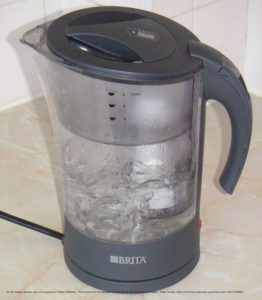
Monitoring
This project first ran in the academic year 2014/15 and then again the following year – the current competition starts with this new academic year now. However the NUS first ran its Student Switch Off (SSO) in 2006. Before SAVES began, the SSO was delivered at 54 universities, reached 130,000 students and delivered average energy savings of 6% per participating dormitory. This information needed to be collated and presented once the SSO was over, but SAVES can deliver immediate performance information. In this way it presented an opportunity to test how well smart meters provide real time information, something we looked at last week in the energy efficiency innovation competitions being run by the UK government.
Aims
SAVES’ primary aim was for an 8% reduction in energy use per participating setting. Its second aim was to instill good habits in young adults at a change point in their lives, so that they would take those habits forward into their adult life. Studies have shown that new habits formed at these pivotal moments can go deep. Interestingly this was borne out by a study that showed that first year students were more receptive to campaigns of this sort than those who had been at college a year or more already.
The habits SAVES intended to instill are simple but effective:
– turning off lights
– switching off appliances that aren’t in use
– putting lids on pans on the hob
– putting a jumper on instead of turning up the heating – the obvious issue here is shared accommodation with one thermostat and varying personal comfort levels
– not overfilling the kettle
– opening the window before putting on the air conditioning – not such an issue in UK universities, especially as students are not usually in their student housing in the warmer weather here
Success
Previous studies of the local, shorter-term variety show that university halls of residence make good energy savings on the back of a campaign – up to 30%. These studies showed that people were most motivated by the actions of those around them. The previous Student Switch Off campaign was considered a success with well-defined aims that it achieved.
For this next part we’re drawing on a PDF download of a review into the 2017/18 Student Switch Off campaign. The research is by Richard Bull of De Montfort University, Neil Jennings and Joanna Romanowicz of the NUS, and Marina Laskari of the National and Kapodistrian University of Athens.

Control
For the purposes of this research, a control group was set up in halls in Linkoping in Sweden. It had a high number of residents and baseline information that was easy to access. There were no exercises going on that could skew the figures.
The halls of residence monitored for the success of the campaign were in Cyprus, Greece, Lithuania, Sweden and the UK. I think this quote is interesting as it shows a particular issue in providing student accommodation in the UK:
“In all countries except for the UK 60 % or more of respondents lived in dorms of the same dorm provider in both years. In the UK this percentage was only 7 % because the vast majority of students move out into the private-rented sector each year.”
Students were studied over two years to see whether they implemented in their second year habits formed in their first. At the end of their first year students felt that their awareness of energy saving had increased “a little”, but of course students will arrive at university with varying habits instilled in them by their parents. Someone already extremely aware of how to save energy won’t increase their awareness much after a campaign but yet they’ll be an ideal dormitory resident from an energy saving point of view.
Influences
In the questionnaires given to students, family came out as one of the three strongest influences on energy saving awareness, together with documentaries and, crucially, Student Switch Off. This was the case across the five participating countries in both years.
Outcomes
According to the questionnaires, three habits showed a statistical increase: putting a lid on pans, boiling just the right amount of water in a kettle, and turning off electronic appliances. Most of the students reached by this earlier campaigns made changes to their behaviour and almost all of those took their new habits with them into post-halls life. Part of their motivation was money-saving. The halls of residence taking part in the campaign showed energy savings significantly outpacing those in the control building – over 12% compared to about 2%, figures that stayed similar in the second year.
There’s more research to be done into how to make these campaigns as sticky as possible. Students in all the participating countries in the first two years preferred to rate themselves against universities in their own countries, not seeing a value in competing against a country they weren’t familiar with. Enthusiasm for looking at the dashboard tended to fade but did have a value, particularly in stimulating competition and therefore energy saving behaviours. In halls of residence students have little control over the delivery of energy, which can limit their enthusiasm.
If you’d like a quick snapshot of how the participating universities are doing in the current campaign, you can visit https://switchoff.nus.org.uk and look at the dashboard for universities including Cambridge, University College Cork, The University of Liverpool, the University of Bucharest and the Technical University of Crete. Many UK universities have a Student Switch Off stall at the Freshers’ Fair, so if you have children off to college any minute now, why not suggest they have a look?
Ofgem
Hello Kevin.
Hello. What are we talking about this week?
Ofgem.
The Office of Gas and Electricity Markets.
Yes, supporting the Gas and Electricity Markets Authority which is also described as its governing body, so that’s clear.
What’s the specific purpose of Ofgem?
Quoting Wikipedia, Ofgem “is the government regulator for the electricity and downstream natural gas markets in Great Britain. It was formed by the merger of the Office of Electricity Regulation (OFFER) and Office of Gas Supply (Ofgas).”
Is it governmental?
No. It describes itself on its website as “a non-ministerial government department and an independent National Regulatory Authority”. It quickly becomes quite Byzantine trying to work out its exact structure. It makes reference to GEMA on its website too. In the end, it’s there to protect consumers.
Is that when an energy company goes bust?
Yes, it helps in that situation but it does far more than that. When an energy company goes bust, as sadly several small providers have this year, Ofgem organises a new supply for consumers and ensures they aren’t cut off. Ofgem’s remit is much broader than that though, aiming to protect customers from the worst effects of greenhouse gases, and ensuring security of supply at a macro level.
Does it have much clout?
It does actually. It’s imposed hefty fines on power companies – £12 million on E.ON five years ago for mis-selling, ie poor sales practice, getting people, specifically what’s termed ‘vulnerable customers’ (that’s people with considerations of old age, illness, poverty and/or disability) to sign up to plans that weren’t in their best interests. E.ON wasn’t found to have been malicious, but Ofgem reckoned management hadn’t done much to identify any problems or act on them when they came to light.
So Ofgem is a watchdog.
It’s that too. It has several roles and breaks off into all sorts of specialisms once you start examining it. For instance Smarter Grids & Governance, Finance and Risk Management, Smart Metering Delivery.
Smart metering again.
Yes, it’s obviously the future. Before the opening up and privatisation of gas and electricity services under the Thatcher government in the 80s, Ofgem’s sort of predecessor existed to set price controls. That meant the monopoly suppliers couldn’t charge outrageous prices. By mid-1999 both gas and electricity markets were open to multiple players and by 2002 the price controls had been removed bit by bit.
Why?
Because Ofgem assumed that competition between the suppliers would keep prices down. That was more or less the case for a couple of years, but then in 2004 Ofgem began the Energy Supply Probe on the back of rising household debt and increasing prices in many sectors. The result was a package of measures to tackle fuel poverty and other issues, particularly as they affected vulnerable consumers. At this point Ofgem lost its price-capping powers, and it’s worth noting that according to OVOEnergy, since then energy prices have risen by 160%.
Competitions & Markets Authority
In 2014 Ofgem announced a Competition and Markets Authority investigation into the major energy companies at the time: Centrica, SSE plc, RWE npower, E.ON, Scottish Power and EDF Energy. Ofgem saw it as a draining the swamp-type exercise that would restore consumer trust in the big players and provide a clear basis for energy sales in future. It was also intended to reassure investors.
The Competitions and Markets Authority recommended that suppliers provide details to their competitors of any households that had been on the most expensive tariffs for more than three years.
Companies had to tell other companies who was ripe for a change? Controversial.
Exactly. Ofgem decided to implement the recommendation. Ofgem also imposed an interim price cap on consumers who used pre-payment meters, as those have traditionally been a very expensive way to use energy.
Ofgem looks after consumers, keeps an eye on what suppliers are up to and tries to keep environmental concerns in play.
Yes, all that, and it regulates the companies that provide supply infrastructure.
Pipes and so on?
Yes, and wires. They also monitor companies’ performance and keep tabs on complaints. Ofgem ensures that companies behave ethically towards consumers.
What does that involve?
A few things including offering different methods of payment, tracking disconnections and supporting energy saving upgrades, something we looked at in episode 11 in our feature on the grants available for works in the home. Ofgem wants consumers to have access to clear information about tariffs and be able to compare clearly across companies and to end the practice of making the most attractive tariffs available only to new customers.
Was that a problem area?
Oh yes. Customers had no idea what tariff they were on as it was so complicated, and people found themselves locked into poor value tariffs while other more recent customers had a better deal. This came out of Ofgem’s 2013 Retail Market Review.
Simpler tariffs and clearer bills
Ofgem recommended a much simpler tariff set-up – only one rate per tariff so you knew what your power was costing you. Keep the tariffs to four core offerings. Clearer bills with information summarised in such a way that customers could compare it with what other companies were offering, and for companies to proactively tell customers if they were eligible for a more favourable tariff.
All that emphasis on comparing what different companies offer – does that mean it’s easy to switch between suppliers?
Confidence Code
It’s certainly a lot easier now than it was, something Ofgem has promoted. Ofgem is responsible for something called the Confidence Code to regulate energy price comparison sites. It means they have to provide fair and unbiased information based on facts and figures. Ofgem has information available on its site on how to switch supplier, complain and get connected to the electricity network in the first place.
Does Ofgem do a good job?
Well listening to all that I think it certainly wants to. It’s made real strides in consumer protection but I’m sure it would like to have more powers. It’s demanded ‘consumer redress’ powers from the government so that it can take heftier action against companies that breach the terms of their license, and that’s been included in the new Energy Bill. Ofgem is now eying the distribution network operators, the companies that deliver electricity from the National Grid to your home. It’s not an open market.
How much is it worth?
A cool £500 million. In 2015 Ofgem introduced rules and a code of conduct to open up this area of operations to smaller players. The new rules mean that these Distribution Network Operators (DNOs) can’t operate across as many aspects of the business now, and in any area where there’s no choice but to have one company running all the aspects of delivery, they have to be open with supplying technical information to would-be competitors.
It sounds like we’re definitely better off for having Ofgem.
I’d say so for sure. If you want to get in touch with Ofgem visit the site and follow the link to what you want to do.
Champions of the Earth Awards
Champions of the Earth is the United Nations Environment Award. It’s the UN’s highest environmental honour. It was established in 2005 to recognise outstanding environmental leadership. This year’s winner in the Policy Leadership category is Costa Rica. Awarded by the United Nations Environment Program, UNEP, Costa Rica was chosen this year for its role in protecting nature and its ambitious policies to combat climate change.

One element of this is Costa Rica’s detailed plan to achieve net zero by 2050. These plans can be a template for other countries to curb their emissions. Costa Rica has managed to generate a walloping 98% of its energy from renewable sources. This meant its state-owned power provider could stop buying energy from the Regional Electricity Market and instead sell it back to other Central American nations.
75% of this renewable comes from hydro, and Costa Rica managed to produce power this way despite drought. It puts this achievement down to planning and optimisation of resources, including geothermal capacity. It now has seven geothermal plants. These use the power contained in volcanic steam, and make Costa Rica the third biggest producer of geothermal power in the Americas.
This dry spell was a big test of Costa Rica’s plans for renewable energy. Costa Rica now considers its dependence on fossil fuels is over and that it is well on track to hit its target of using 100% renewable power by 2030. By then it expects about 70% of all taxis and buses to run on electricity with full electrification by its net zero target date of 2050.
If you’re interested in the nitty gritty of Costa Rica’s renewable systems, follow the link to the Ecowatch article.
Reforestation

Costa Rica has made an enormous effort to reforest the land. Decades of deforestation have been reversed and forest now covers 53% of the country. Around half of its land is now under some form of protection.
Its president, Carlos Alvarado Quesada, is extremely proud of Costa Rica’s achievement but believes it can achieve far more. He accepted the award on behalf of the entire population, which incidentally produces only 0.4% of global emissions yet has gone to these lengths to reduce that to virtually nil, and its future citizens.
Of course this hasn’t happened overnight. Costa Rica has worked on innovative environmental policies for the past 50 years. As it reduces dependence on fossil fuels, it’s created employment and will continue to do so in areas including waste management, sustainable agriculture and providing clean public transport.
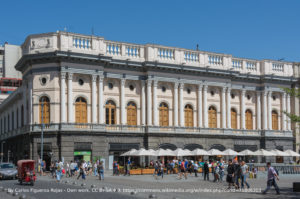
UN Climate Change Conference
Costa Rica is developing an environmental leadership role. It’s co-leading the UN Climate Change Conference in Santiago, Chile, this December. Although Chile leads the conference, Costa Rica will be there to drive countries to make ever more ambitious commitments, and it will host a preparatory meeting this month.
UNEP’s executive director, Inger Anderson, described Costa Rica as “a pioneer in the protection of peace and nature and sets an example for the region and for the world.” and as rising to the challenge. To quote the UN Environment website:
“Officials say Costa Rica aims to change the paradigm of development, envisioning a consumption and production system that generates an environmental surplus rather than a deficit.”
Future Policy Award
Costa Rica isn’t new to this sort of thing. In 2010 it was awarded the Future Policy Award by the World Future Council in recognition of its 1998 biodiversity law. Its objective is to conserve biodiversity, use resources sustainably and ensure equal distribution of benefits and costs. It’s been considered a success and a model for other nations to follow. For the detail on that follow the link to thereddesk.org, but here’s a quick peek at its flavour:
“Art.11 enacts the preventative and precautionary principles. It also states that biodiversity should be used in the public interest (including conservation, food security and the interest of future generations) and that conservation and sustainable use of biodiversity should be integrated across other policy areas.”
The Champions of the Earth Awards began in 2015, and typically award five to seven laureates each year, from private and public businesses, and civil society. Two years ago a Young Champions of the Earth section was added. There are no cash prizes. Previous winners include Narendra Modi in 2018 for Policy Leadership, The Moroccan Agency for Solar Energy in 2016 for Entrepreneurial Vision, and Albert II, Prince of Monaco, for his commitment to sustainable development in Monaco.
Event
The Guardian would like to encourage you to pick up a spade and volunteer to plant a tree on the 30th November as part of the Big Climate Fightback. The Guardian describes it as the biggest mass tree-planting campaign in the UK’s history. Denmark recently ran something a bit similar with its TV fundraising evening asking people to pay for trees to be planted. In the UK you can take more direct action by running a tree-planting event. This can be anywhere you have permission.

The Woodland Trust wants a tree planted for every person in the country over the next five years. It’s providing native broadleaf varieties for the event, such as oak, birch and hawthorn. Remember trees will need to be cared for too so tree-planting groups are encouraged to stay together after the planting and look after their saplings.
You can pledge to take part through the Woodland Trust website. So far over 10,000 people have taken part but the Woodland Trust is hoping for many more, ideally 1 million. Go sign up now!
And what have we been up to? After our recent problems with parts cutting we’ve been looking at our options to bring that in-house. We still hope to have the Letterplate Eco available before the end of this year. If you’d like to be notified when it’s available please email info@ecoflap.co.uk.
Thank you for listening to episode 18 of the Energy Efficiency Podcast. Until next time you can find us on both Twitter and Instagram as Ecoflap, and on Twitter we also tweet as The Petflap. Next week: energy efficiency in tea production, food recycling, and the Three PerCent Club.
Music credit: “Werq” Kevin MacLeod (incompetech.com)
Licensed under Creative Commons: By Attribution 3.0 License
http://creativecommons.org/licenses/by/3.0/
